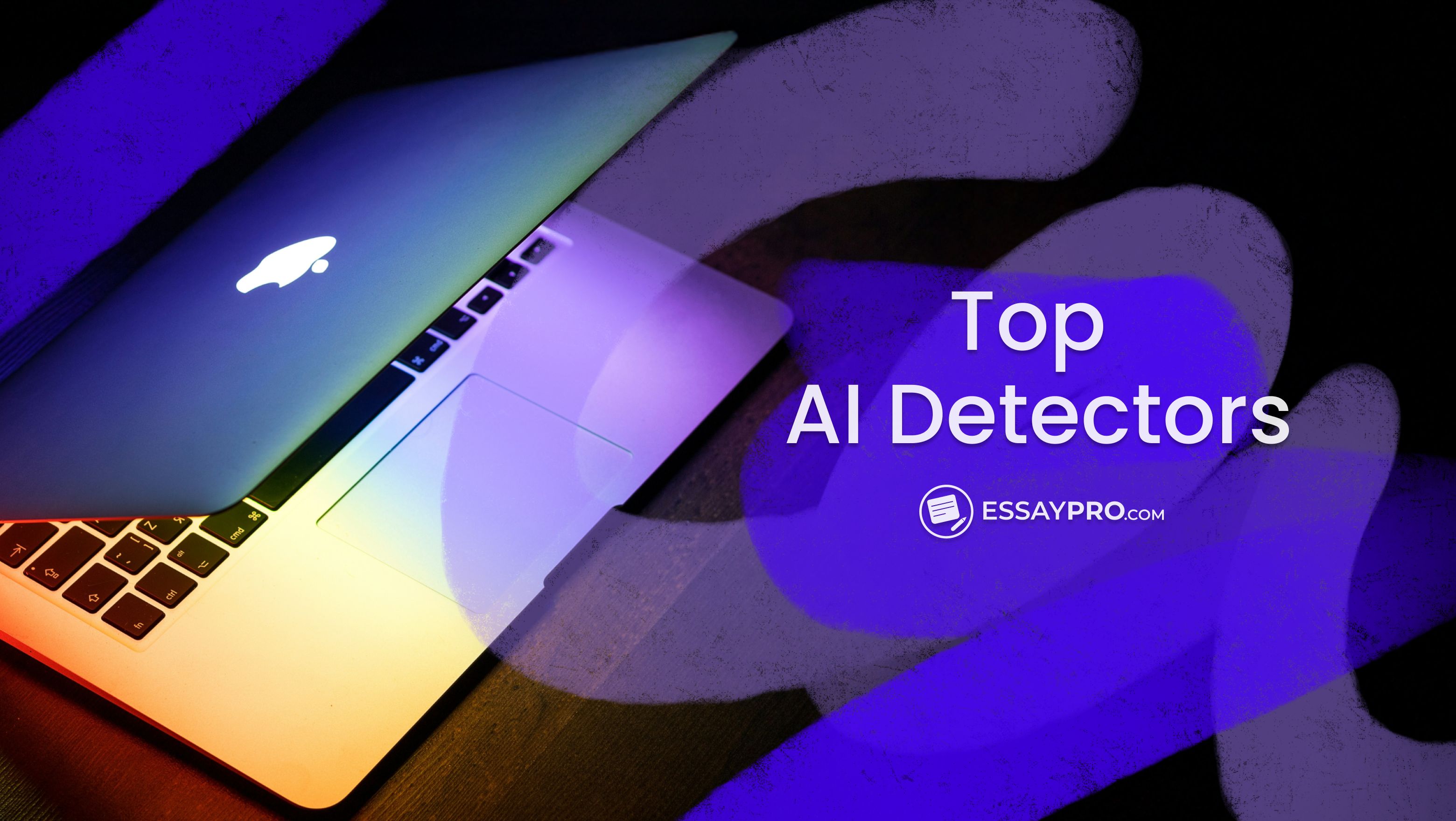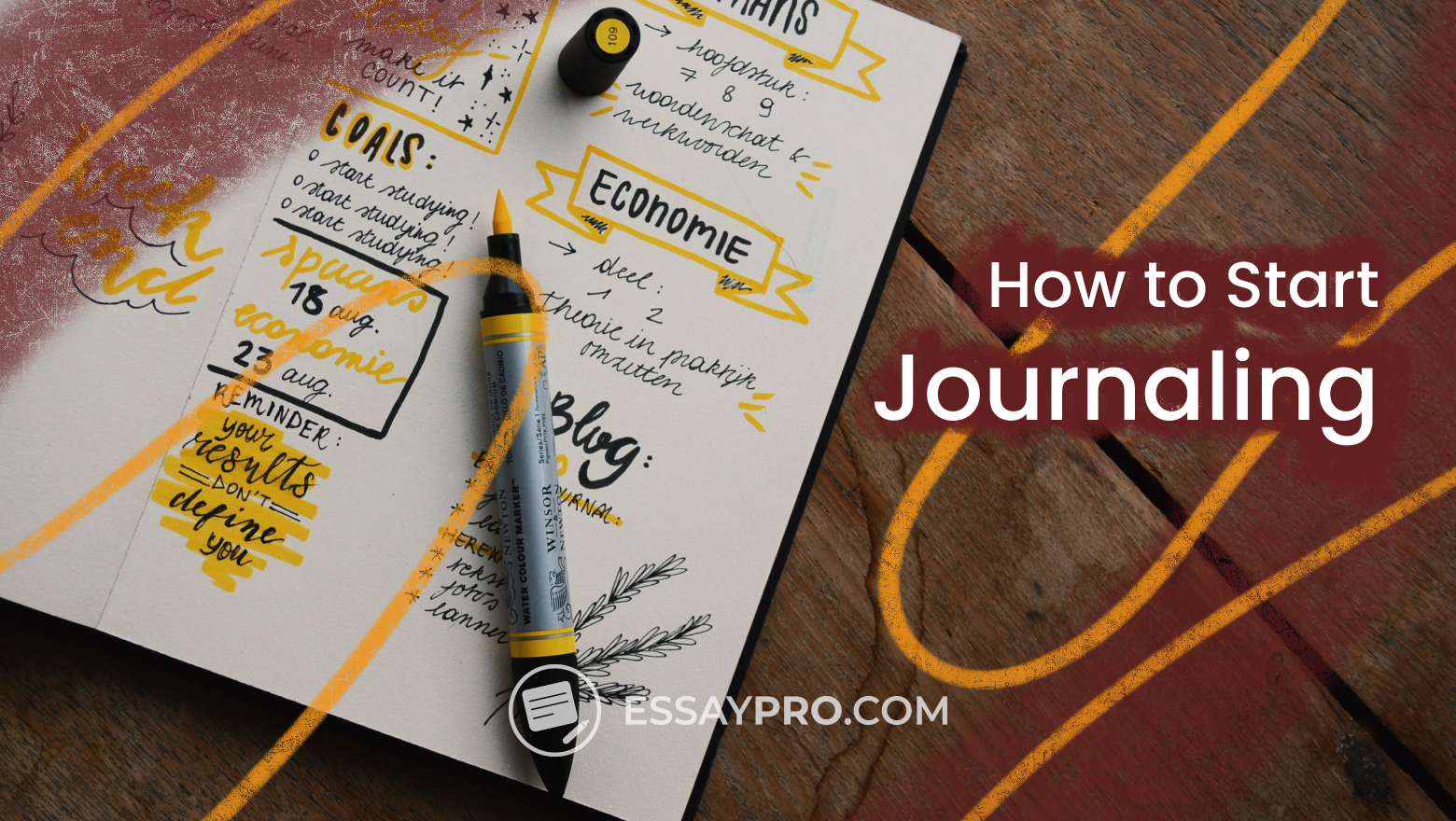In 2025, AI writing is everywhere, from school essays to blog posts to marketing emails. Some of it’s easy to spot. Most of it isn’t. That’s why we’re seeing a rise in AI detection tools.
Here are the top 3 AI detectors that stood out:
- EssayPro AI Detector
- ZeroGPT
- Originality.ai
This guide is here to help. We tested the top AI detectors by feeding each one the same paragraph written by ChatGPT. The goal was simple: see which tools could actually tell the difference between human and machine when the AI tries to sound personal and natural.
We included EssayPro not just because its detector did well, but because, as an AI word generator, it’s part of a platform that supports students from start to finish. If your text gets flagged and you’re not sure what to do next, at EssayPro, we offer real writing support, editing help, and academic guidance, so you’re not left on your own. You can also try our free plagiarism checker to verify your paper’s originality before submitting it.
How We Tested Each Tool
To figure out which one really deserves the title of best AI detection tool, we kept things simple and fair. We generated one simple paragraph using ChatGPT and tested the exact same text through each tool.
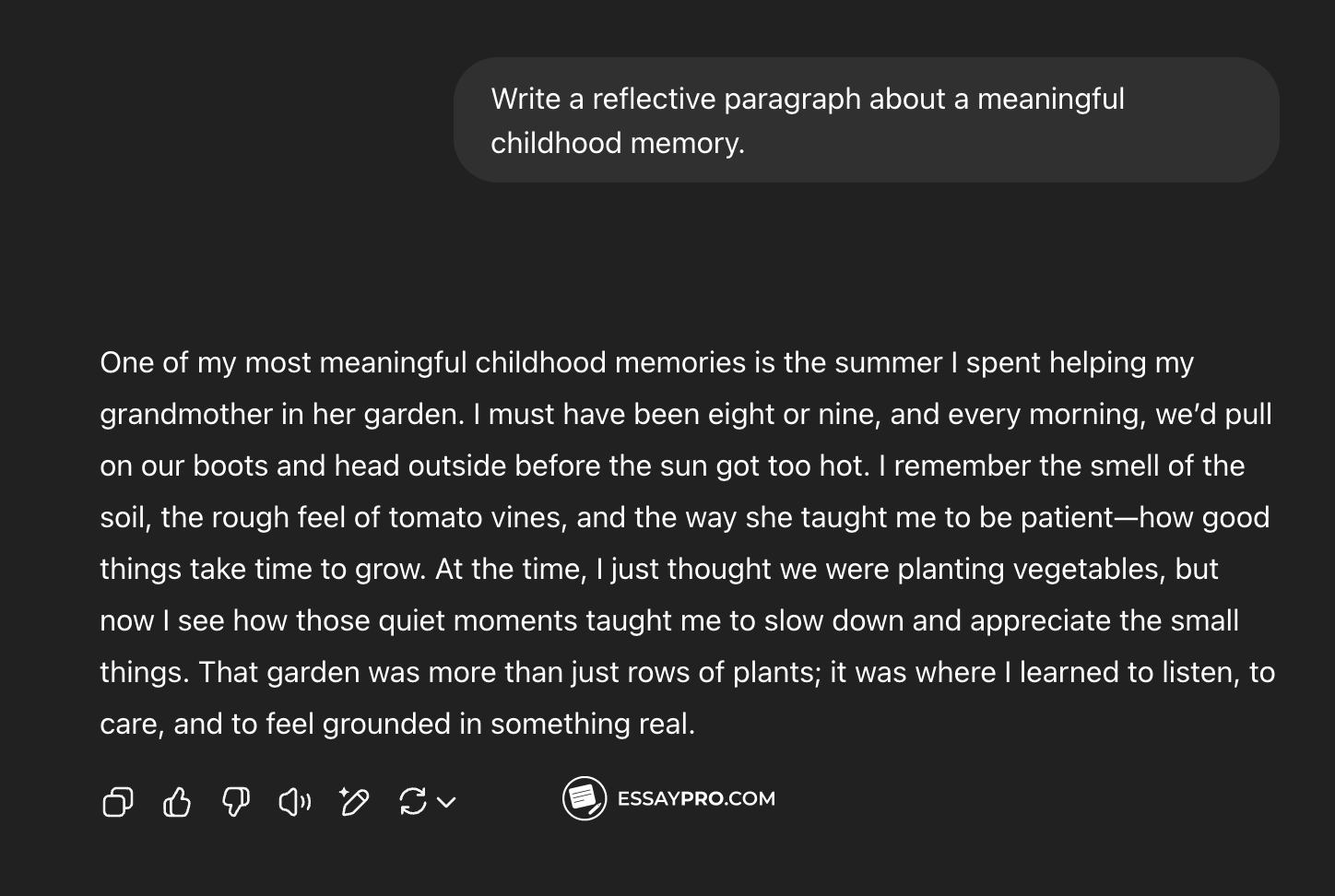
The goal was to see which tools could accurately spot AI-written content that doesn’t scream ‘robot.’ We weren’t testing obvious, formulaic outputs. We wanted to know which detector could catch well-disguised AI writing, something that might realistically show up in a student essay or blog post.
Using the same sample across the board lets us compare results side by side, without any bias or variation. That’s how we found out which tool held up and which ones missed the mark.
💬 Finding Best AI Detector Can Be Hard
ump into our EssayPro Community and share this list of best checkers for those in need. Sometimes, hearing how others overcame struggles can be more powerful than another tip list.


What Makes a Top AI Content Detector
A solid AI detector doesn’t just throw out a score and call it a day. Here’s what to look for:
- Reliable accuracy: The best detectors spot AI-written text without constantly mislabeling human work. They handle both pure AI content and mixed or lightly edited writing.
- Clear breakdowns: Good tools highlight specific sentences and explain their reasoning. That way, you know what to change without second-guessing everything.
- Multi-model awareness: It’s not just ChatGPT anymore. A smart detector should recognize content from all the major models, like Claude, Gemini, and others, and still hold up when the text has been paraphrased or translated.
- Useful extras: Tools that offer rewriting, plagiarism checks, or browser extensions make the process more practical, especially when you're running out of time.
It’s getting harder to tell the difference. If you want a closer look at what sets them apart, take a minute to read our full piece on AI vs human writing.
Side-by-Side Look at the Best AI Content Detectors
If you're wondering which AI detector actually works, this table breaks it down for you. Find the best AI detectors, and learn how they compare in accuracy, features, and pricing.
EssayPro’s AI Detector
EssayPro’s checker is a free, no-fuss, good AI detector tool that helps you figure out if your writing sounds like it came from an AI. It’s built for students, bloggers, and anyone who wants to double-check their content before hitting submit.
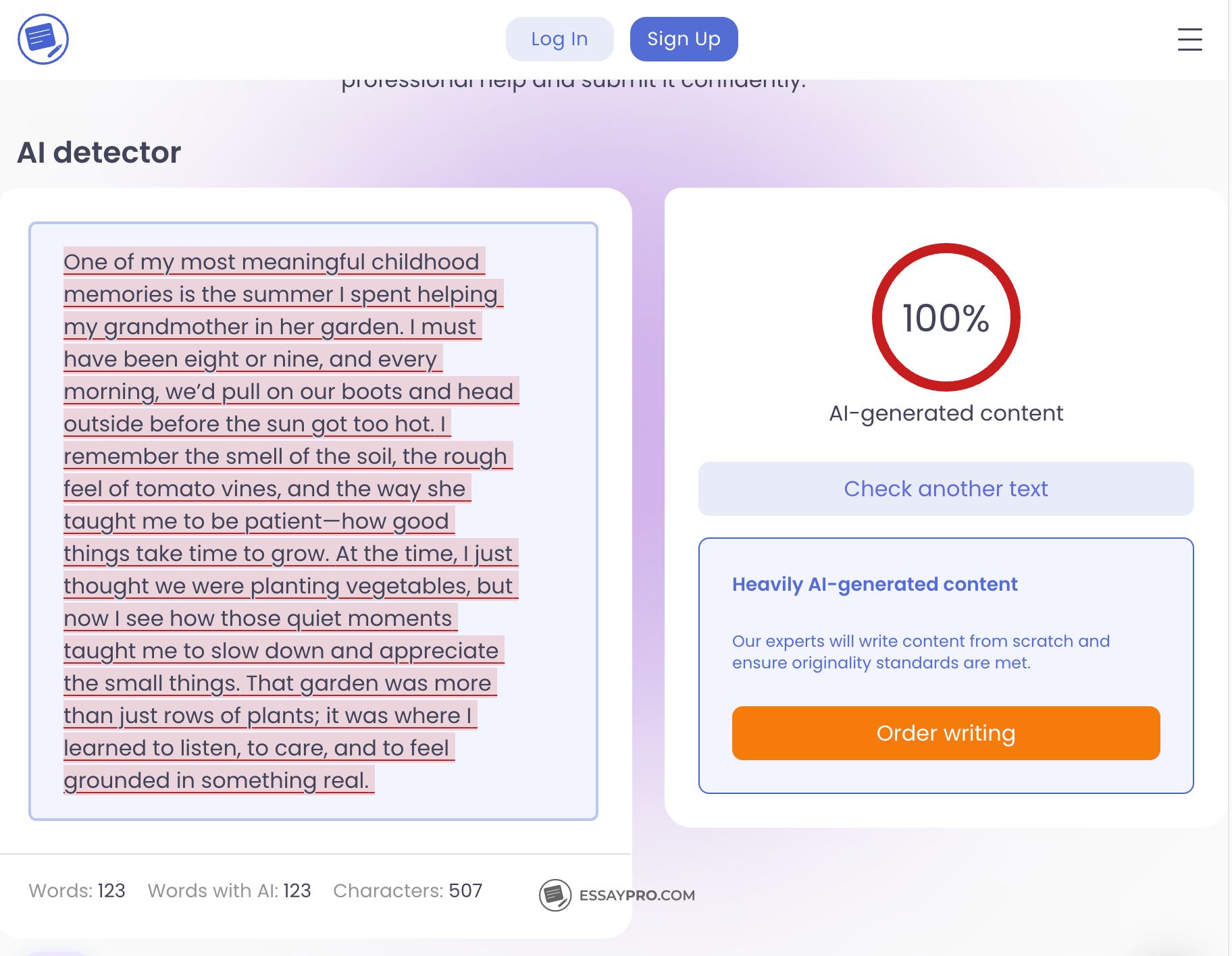
How it works: You paste in your text, and the tool uses advanced algorithms to look for clichés, consistent phrasing, and other patterns often seen in AI writing.
Pricing: Completely free to use, no sign-up required
Extra features: Plagiarism checker, citation generator, and a humanizer for flagged sections. If you’re in a rush or need human help, EssayPro offers editing and full-on writing support too.
Accuracy: EssayPro claims its AI detector is ‘ultra-accurate’ with minimal false positives. It works well with content from models like ChatGPT, Gemini, and Claude and finds both fully AI-generated and mixed-content submissions.
ZeroGPT
ZeroGPT is a freemium AI-text detector that scans content for suspected AI origins. Users paste text (up to 15k characters in the free version); paid tiers support batch checks, API access, and add-ons like summarizer and paraphraser tools.
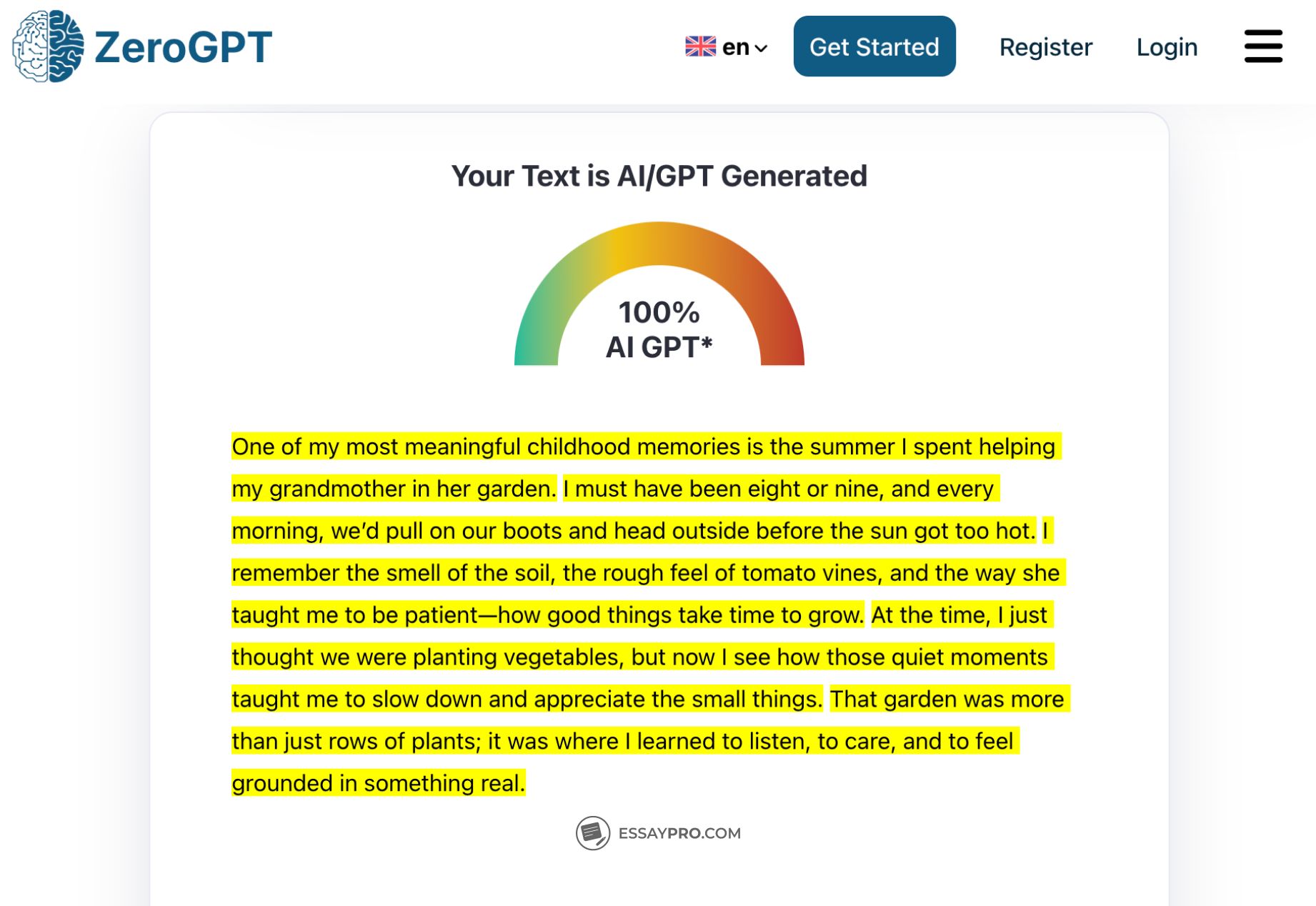
How it works: ZeroGPT applies its proprietary DeepAnalyse™ algorithm, analyzing structure, perplexity, burstiness, and linguistic markers to flag AI-generated sections.
Pricing:
- Free plan: Up to 15,000 characters per scan
- Pro: ~$9.99/month (annual billing: $7.99), allowing 100k characters and 50 batch checks
- Max: $18.99–$26.99/month, offering up to 150k characters, 75 batch checks, plus WhatsApp/Telegram bots and expanded features
Extra features: AI‑powered summarizer, paraphraser, grammar checker, translator
Accuracy: ZeroGPT claims 98-99% accuracy in spotting AI text
GPTZero
GPTZero is an AI‑text detector launched in January 2023 and is mainly used by teachers, editors, and other professionals.
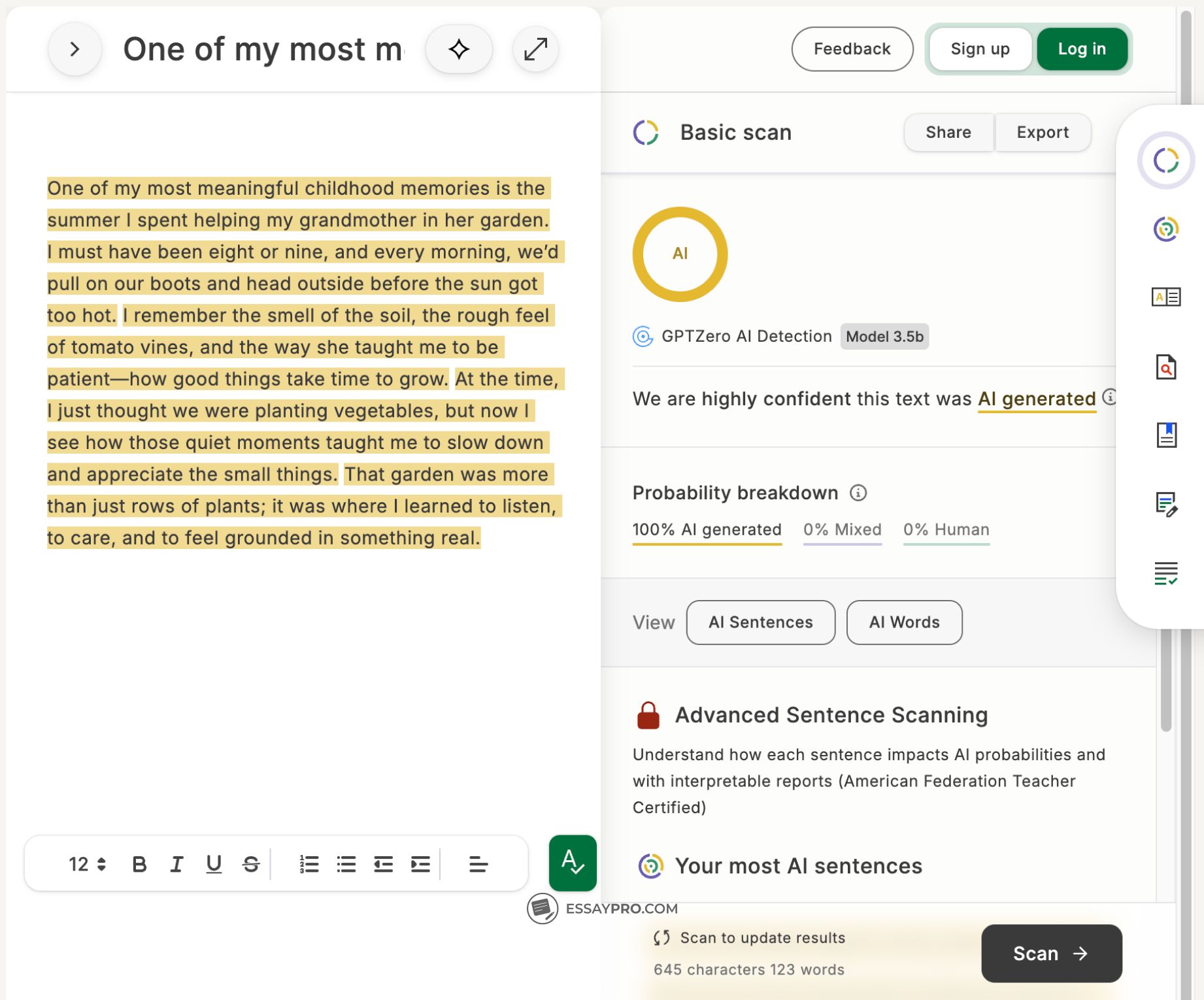
How it works: GPTZero looks at how predictable the language is (that’s called perplexity) and how varied the sentence structure feels (burstiness).
Pricing:
- Essential plan: $8.33/month if billed annually
- Premium plan: $12.99/month
- Professional plan: $24.99/ month
Extra features: Chrome and Google Docs extensions, grammar insights, plagiarism detection, Canvas and Moodle support for educators, team dashboards, and even Zapier integrations.
Accuracy: GPTZero claims 99% accuracy on fully AI-generated content and about 96% for mixed texts.
Copyleaks
Copyleaks is among the best AI content detectors. It is a powerful AI and plagiarism detector that supports over 30 languages for AI checks and 100+ for plagiarism.

How it works: Copyleaks combines AI‑detecting logic, called AI Logic, with classic plagiarism scanning.
Pricing:
- AI Detector: $8.33/month (billed annually)
- Plagiarism Detector: $9.17/month (billed annually)
- AI + Plagiarism Bundle: $13.99/month (billed annually)
Extra features: Browser extension to check any webpage, code detection for languages like Java, Python, C++, multi-language plagiarism, including cross‑language checks
Accuracy: Copyleaks claims over 99 % accuracy with under 0.2 % false positives; independent tests confirm around 99 % for common models like GPT-4. However, some studies found that its detection success drops after paraphrasing, and accuracy can fall from near-perfect to about 50 %
Winston AI
Winston AI is a tool designed to detect AI-written text and spot plagiarism. It gives quick, sentence-level feedback across multiple languages and even catches AI-generated images.
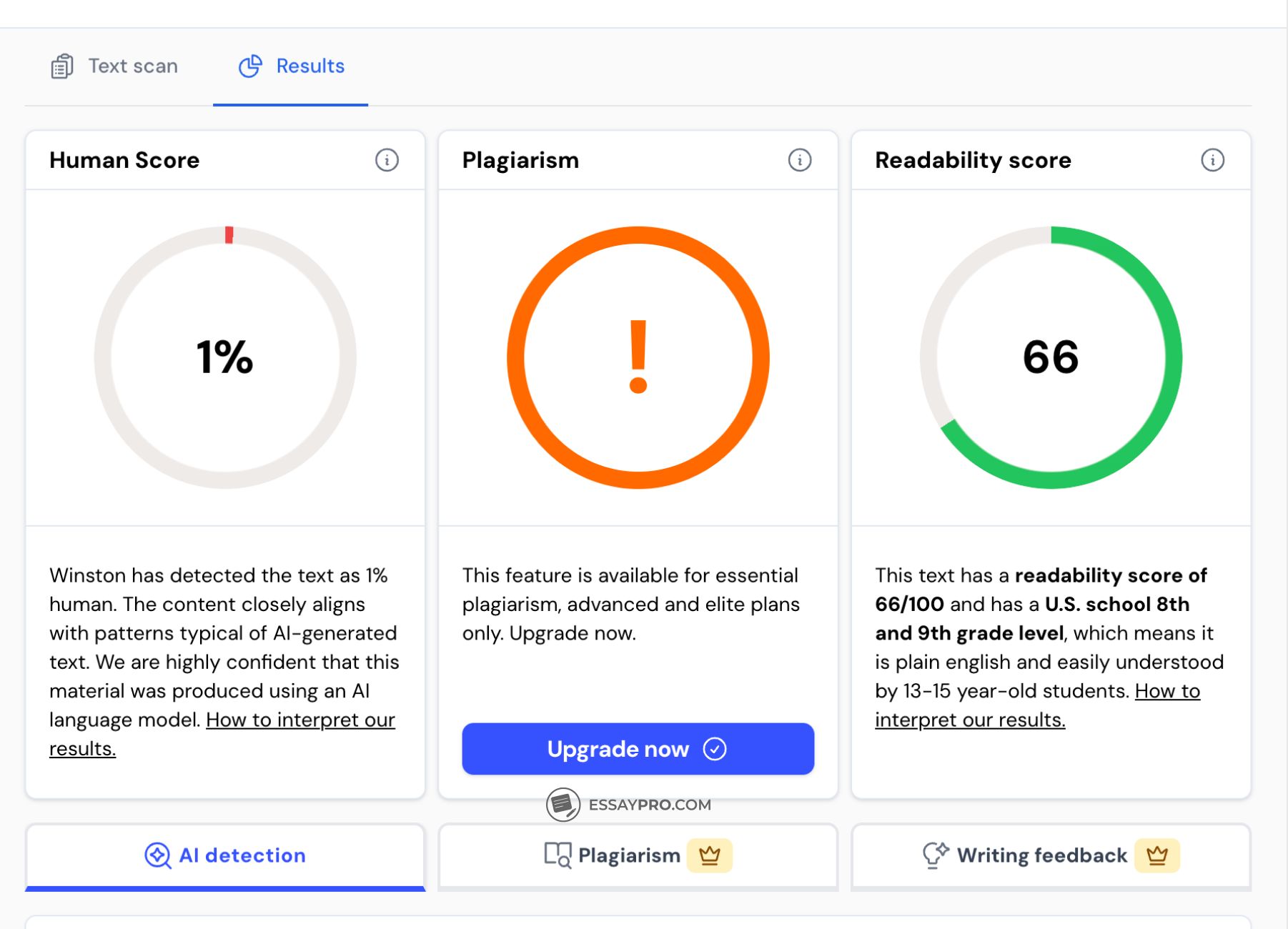
How it works: Winston AI checks for AI-generated patterns in writing using a combination of linguistic analysis, deep learning, and custom algorithms.
Pricing:
- Essential: $12/month (billed annually)
- Advanced: $19/month (billed annually)
- Elite: $32/month (billed annually)
Extra features: Browser extension, image/deepfake detection, OCR support for scanned documents, writing feedback tools, PDF reports, website certification (HUMN-1), and multi-user dashboards.
Accuracy: Winston AI claims 99.98% accuracy on detecting AI-generated text. Independent studies show accuracy between 86% and 99%.
Sapling
Sapling is a flexible tool built for spotting AI-generated content and is mainly used by teachers, editors, or SEO writers.

How it works: You paste in your text or upload a file, and Sapling runs it through its AI model to look for patterns common in machine writing. You’ll get a clear score plus highlights showing which parts seem AI-written based on predictability and phrasing.
Pricing:
- Free plan: Up to 2,000 characters per scan
- Pro plan: $12/month (billed annually)
Extra features: You can upload PDFs and Word docs, use browser or Google Docs extensions, and even connect via API.
Accuracy: Sapling claims over 97% accuracy with fewer than 3% false positives. It works well for longer texts, but short or overly simple writing can trip it up.
QuillBot
QuillBot is a writing assistant with a built-in AI detector. Students, writers, and professionals use the platform for rewording, checking grammar, and spotting AI.
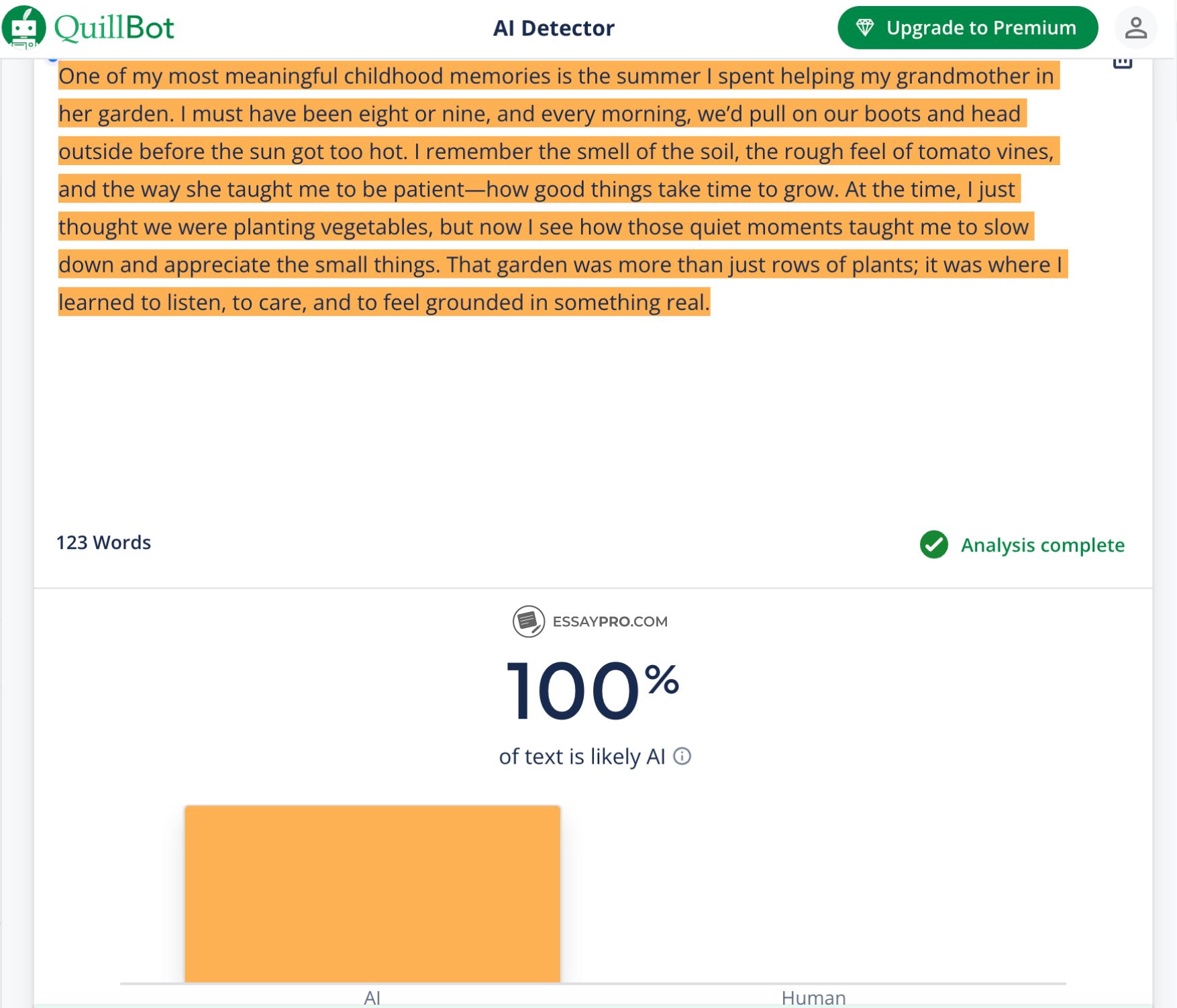
How it works: The AI detector looks at how the text is written, its structure, predictability, and sentence variation. Then it compares those patterns to what it knows about AI-generated content.
How it works: The AI detector looks at how the text is written, its structure, predictability, and sentence variation. Then it compares those patterns to what it knows about AI-generated content.
Pricing:
- Premium plan: $4.17/month (billed annually at $49.95), which includes unlimited words/month for AI detection, plus full access to all QuillBot tools.
Extra features: Paraphraser, summarizer, grammar checker, plagiarism tool, citation generator, and translation support.
Accuracy: QuillBot’s detector does well with fully AI-written text, but it can get confused when the writing is edited or rewritten. Some users say it marks human writing as AI too often.
Smodin
Initially a plagiarism checker, Smodin is now a rewriting, summarizing, translating, and AI-detecting tool.
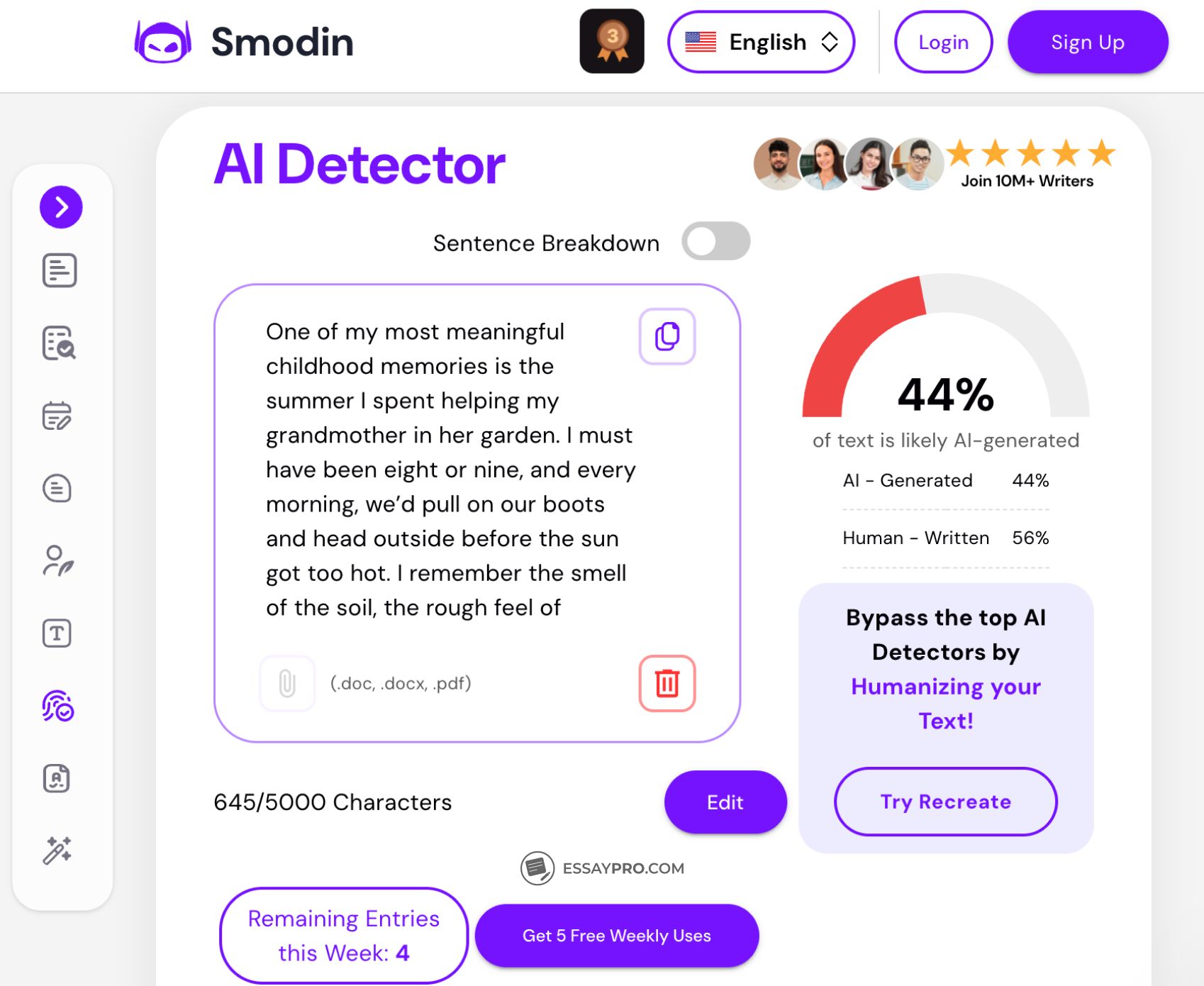
How it works: You can paste your text or upload a document, and Smodin’s detector scans it for signs of AI writing. It highlights the parts that seem machine-written and gives you a confidence score.
Pricing:
- Teachers: $9/month (billed annually)
- Students: $15/month (billed annually)
- Ultimate: $18/month (billed annually)
Extra features: Tools for rewriting, summarizing, translating, and checking grammar. There’s also a plagiarism checker, citation manager, AI chatbot, homework helper, and even an essay grader. It works in over 100 languages and supports scanned documents too.
Accuracy: Smodin claims around 91% accuracy when detecting AI text and says it’s 99% accurate with human writing. But independent tests found it’s very forgiving and easier to trick than other tools, especially when the content is lightly paraphrased.
Monica
Monica AI is a clean, easy-to-use platform that helps you check whether text sounds like it was written by AI and gives you tools to fix it if it does. It pulls results from top detectors like GPTZero, ZeroGPT, and Copyleaks.
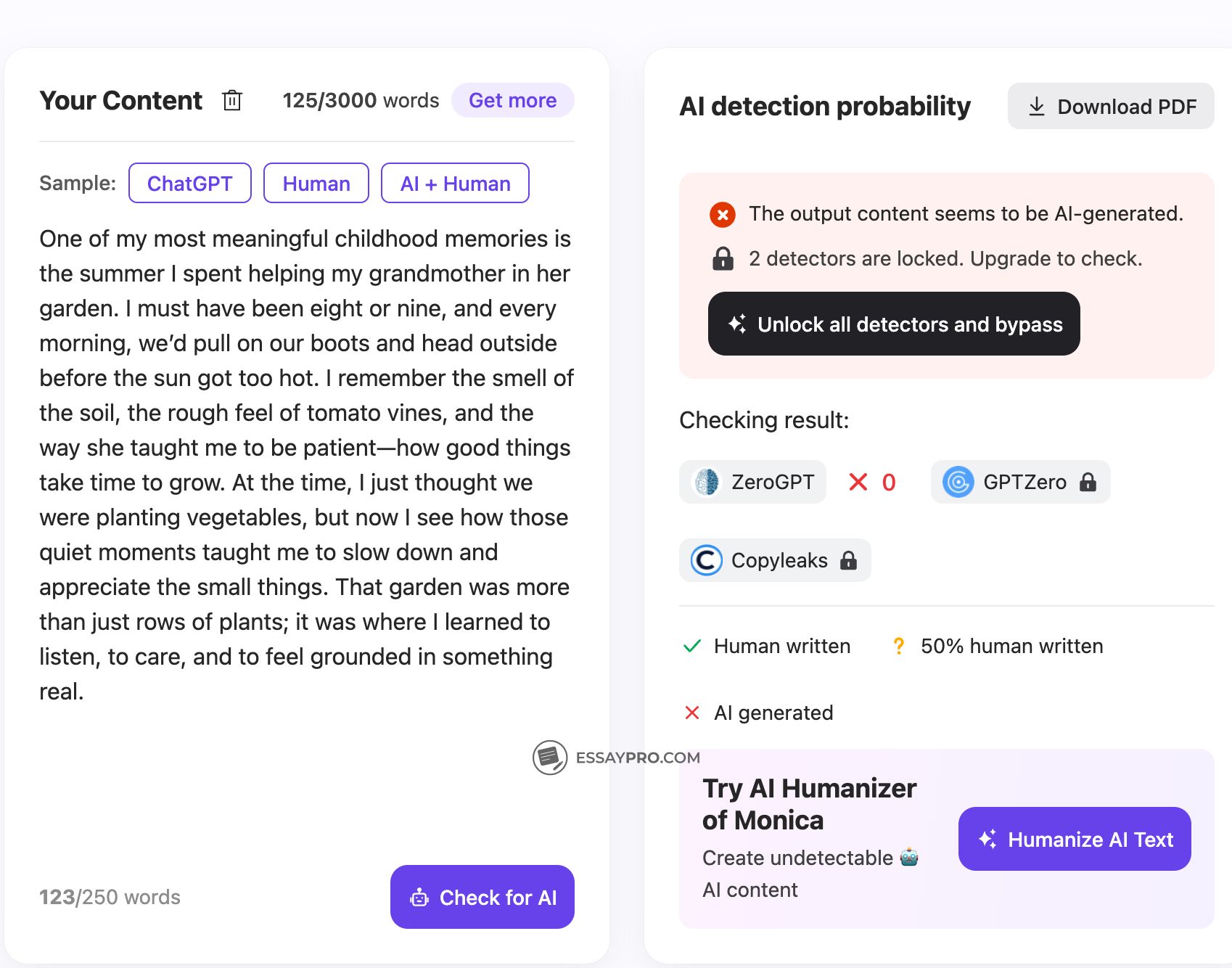
How it works: You paste in your text, and Monica runs it through multiple AI detectors to see how likely it is to be machine-written.
Pricing:
- Unlimited yearly plan: $12.4/month
- Unlimited monthly plan: $24.9/month
Extra features: AI paragraph rewriter, browser extensions for Chrome and Edge, and apps for desktop and mobile. You can also export your results as a PDF.
Accuracy: Monica claims over 99% accuracy, but heavily edited or paraphrased AI text might sneak through.
Originality
Originality.ai is a tool built for writers, publishers, and educators who care about quality and want everything checked in one place.
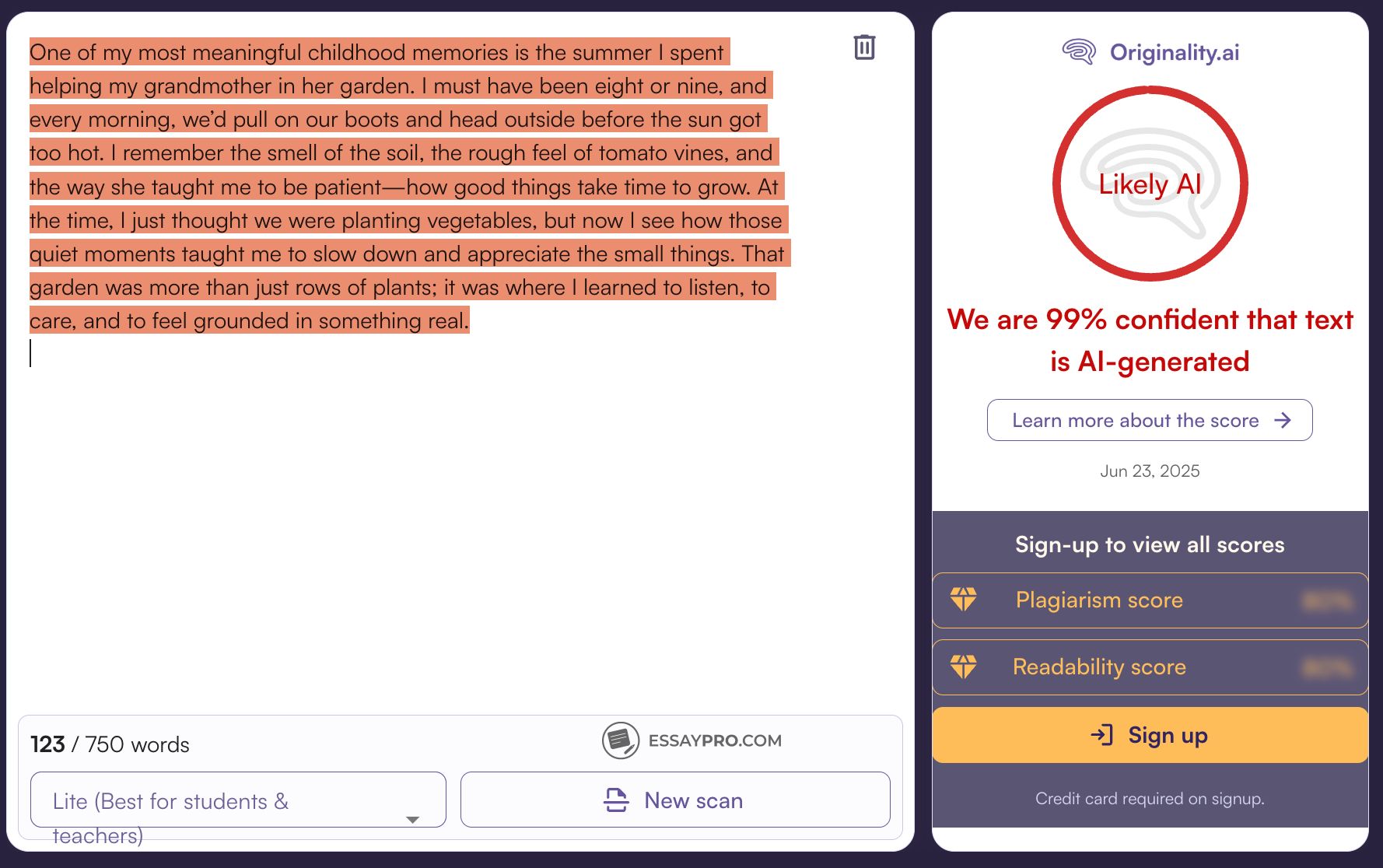
How it works: You can paste in your text or scan an entire site, and Originality.ai runs it through one of three detection modes. There’s a Lite option for everyday checks, a Turbo mode for stricter scans, and a multilingual model that supports 15+ languages.
Pricing:
- Pay as you go: $30, one-time payment
- Pro: $12.95/month
- Enterprise: $136.58/month
Extra features: Chrome extension that tracks your writing process, shareable reports, team management tools, plagiarism checker, SEO-based readability scoring, full-site scanning, a fact-checking helper, and API access for bigger teams.
Accuracy: Originality.ai claims over 99% accuracy, with under 1% false positives on its Lite mode and under 3% for Turbo. Third-party tests back that up, but like every detector, it can struggle with paraphrased or highly edited text. Some creative or simple human writing might get flagged, too.
Final Words
Before you choose an AI detector, it helps to know what actually works and what just throws out random scores. We tested the most talked-about tools so you don’t have to. Here’s what stood out, what fell short, and how to move forward with confidence.
- Tools like EssayPro AI Detector, ZeroGPT, and Originality.ai stood out for their accuracy and ease of use.
- The best detectors highlight problem areas and help you revise, instead of just labeling your text.
- Accuracy often depends on context; heavily edited or paraphrased AI content can still sneak past most tools.
FAQs
What Is the Best AI Detection Tool?
It depends on your needs. For quick, free scans, EssayPro AI Detector is a strong pick. If you need in-depth analysis and full-text feedback, ZeroGPT or Originality.ai are solid choices.It depends on your needs. For quick, free scans, EssayPro AI Detector is a strong pick. If you need in-depth analysis and full-text feedback, ZeroGPT or Originality.ai are solid choices.

Mariam Navrozashvili
She has a Master’s degree in English Literature and brings a deep understanding of storytelling, critical analysis, and language structure to her work. On EssayPro Blog Mariam writes guides on literary analysis, essay composition and language studies to help students improve their writing skills. In her free time she likes to read classic novels and discuss literary theory.
- Okoye, R. C., & Zahedi, M. (2023). Can AI detectors tell who wrote it? A review of current AI-detection tools in academic integrity. International Journal for Educational Integrity, 19(1). https://doi.org/10.1007/s40979-023-00140-5
- Lo, S., & Gautam, D. (2023). Evaluating the effectiveness of AI-content detectors in academic contexts. Discover Artificial Intelligence, 3(1). https://www.sciencedirect.com/science/article/abs/pii/S2666799123000436

